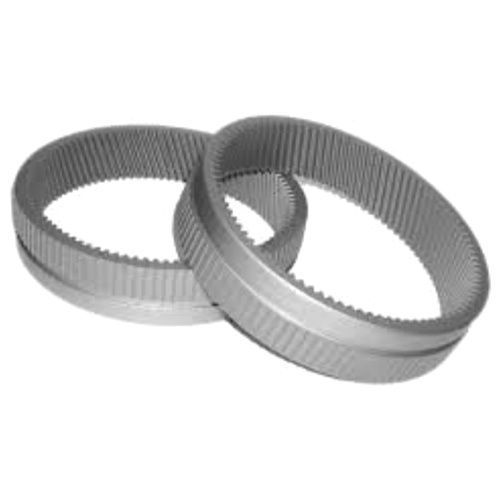Nitrocarburising For Wear Resistance
Nitrocarburising For Wear Resistance Trade Information
- Minimum Order Quantity
- 1 Kilograms
- Payment Terms
- ), ', a, h, n, ', a, p, a, l, ', , ', a, s, h, , g, a, i, n, s, , e, l, i, v, e, , (, ), ', , ', a, s, h, , o, n, , e, l, i, v, e, , (, ', , s, v, a, , n, e, , (, ', ), , ', s, a, h, , i, n, , v, a, i, S, e, , (, ), ', h, , ', e, , e, ', ', L, e, e, , , o, f, , ', T, e, , a, , i, g, h, , (, S, i, g, h, , L, /, ), ', n, s, f, e, l, e, g, a, p, h, i, , T, a, e, , (, T, /, T, ), ', Cash in Advance (CID), Cash Advance (CA), Cash Against Delivery (CAD), Cheque, Cash on Delivery (COD)
- Supply Ability
- 2000 Kilograms Per Day
- Delivery Time
- 2 Days
- Packaging Details
- Asper customer's specification
- Main Domestic Market
- , ', l, l, , n, d, ', , ', S, o, t, n, d, , ', , ', n, t, l, , n, d, ', , ', W, s, t, , n, d, ', , ', o, l, t, , n, d, ', , ', s, t, , n, d, ', , ', G, t, ', , ', n, t, k, ', , ', ', , ', k, s, d, ', ', ', o, m, ', , ', l, y, ', ', , n, ', ', , , d, n, d, s, , ', B, ', , ', n, d, ', , ', D, m, n, , n, d, , D, ', , ', G, o, ', , ', J, k, n, d, ', , ', d, s, b, ', , ', n, , ', , ', n, s, s, l, m, ', , ', D, l, ', , ', D, d, , n, d, , , l, ', , ', n, d, m, n, d, , c, o, b, s, s, , n, d, , ', n, ', c, , ', s, l, , d, s, ', t, ', t, ', , ', ', y, n, d, , ', m, c, l, , s, ', , ', J, m, m, , n, d, s, , s, m, ', , ', d, y, , d, s, ', , ', t, ', , ', n, l, d, , ', ', s, t, n, ', , ', S, k, k, m, ', , m, , ', l, , d, n, ', n, l, ', , ', ', , ', o, n, d, ', c, y, ', , ', U, t, t, , d, s, ', , ', U, t, t, k, n, d, ', , ', W, s, t, , B, n, l, All India
- Certifications
- ISO 9001 :2015 & IATF 16949 2016
About Nitrocarburising For Wear Resistance
Ferritic nitrocarburizing or FNC, also known by theproprietary names ALFANIT,(Liquid Nitriding) is a range ofproprietary case hardening processes that diffuse nitrogen and carbon into ferrous metalsat sub-critical temperatures during a salt bath. Other methods of ferriticnitrocarburizing include gaseous processes such as Nitrotec and ion (plasma)ones. The processing temperature rangesfrom 525 C to 625 C, but usually occursat 565 C. Steel and other ferrous alloys remain in the ferritic phaseregion at this temperature. This allows for better control of the dimensionalstability that would not be present in case hardening processes that occur whenthe alloy is transitioned into the austenitic phase.
Nitrocarburising: KNITCOR (QuenchPolish Quench) coating begins with nitrocarburising the surface, which ofteninvolves using gaseous substances or salt solution to diffuse carbon andnitrogen on the metal surface. This process often forms a rigid material withanti-corrosion properties on the metal surface. The two methods used in nitrocarburisingare gas and salt bath nitrocarburizing.
Gas nitrocarburising: Themetal component or substrate requires a mixture of carbon and nitrogen gasunder extreme temperatures to achieve nitrocarburizing for the metal surface.
Salt bathnitrocarburising: Salt bath, on the other hand, requires asalt solution containing carbon and nitrogen compounds with the metallicsubstrate immersed in it to achieve nitrocarburizing.
Polishing: The next stepafter achieving nitrocarburising is polishing, ensuring no roughness on thesurface, and giving it a fine, sleek, and pleasant surface finish. You™ll haveto use either mechanical or chemical-assisted polishing to achieve a smoothfinish. Fine abrasive materials are used in removing any imperfections on thesurface of the coated material when using mechanical methods to achieve thepolishing process. It often leaves a crease-free surface that is pleasant tothe sight.
Quenching: The last step in theQuench Polish Quench coating process is quenching the excessive heat generatedduring the coating process. Cooling is often done rapidly to achieve a firmcoating surface. Two major methods are often used to quench this extreme heat:water and polymer quenching.
Waterquenching involvessimply submerging the coated material into water or brine to achieve rapidcooling and a rigid coated surface.
Polymer quenching: In this case,cooling involves using a polymer solution in which you submerge the coatedmaterial. This method is often better than water quenching, considering it isbetter controlled.

- Minimum Order Quantity
- 1 Kilograms
- Supply Ability
- 2000 Kilograms Per Day
- Delivery Time
- 2 Days
- Main Domestic Market
- , ', l, l, , n, d, ', , ', S, o, t, n, d, , ', , ', n, t, l, , n, d, ', , ', W, s, t, , n, d, ', , ', o, l, t, , n, d, ', , ', s, t, , n, d, ', , ', G, t, ', , ', n, t, k, ', , ', ', , ', k, s, d, ', ', ', o, m, ', , ', l, y, ', ', , n, ', ', , , d, n, d, s, , ', B, ', , ', n, d, ', , ', D, m, n, , n, d, , D, ', , ', G, o, ', , ', J, k, n, d, ', , ', d, s, b, ', , ', n, , ', , ', n, s, s, l, m, ', , ', D, l, ', , ', D, d, , n, d, , , l, ', , ', n, d, m, n, d, , c, o, b, s, s, , n, d, , ', n, ', c, , ', s, l, , d, s, ', t, ', t, ', , ', ', y, n, d, , ', m, c, l, , s, ', , ', J, m, m, , n, d, s, , s, m, ', , ', d, y, , d, s, ', , ', t, ', , ', n, l, d, , ', ', s, t, n, ', , ', S, k, k, m, ', , m, , ', l, , d, n, ', n, l, ', , ', ', , ', o, n, d, ', c, y, ', , ', U, t, t, , d, s, ', , ', U, t, t, k, n, d, ', , ', W, s, t, , B, n, l, All India

Price:
- 50
- 100
- 200
- 250
- 500
- 1000+



